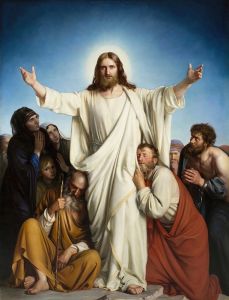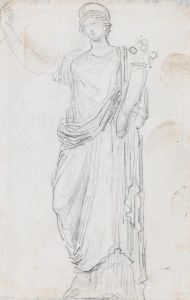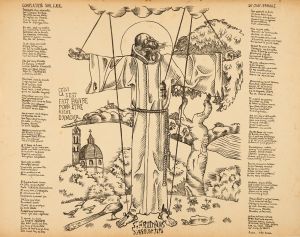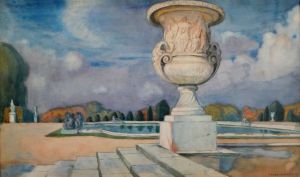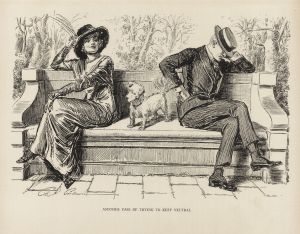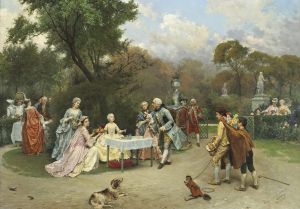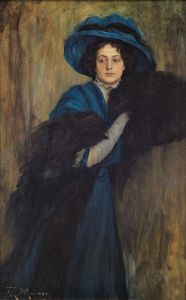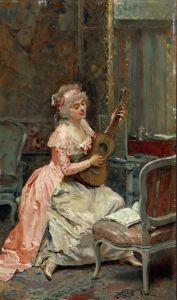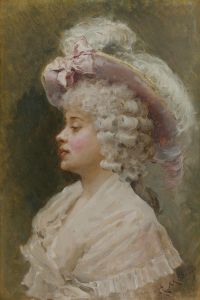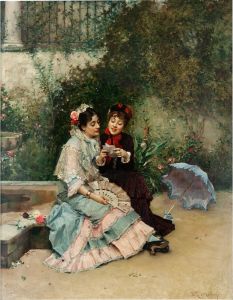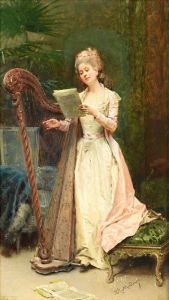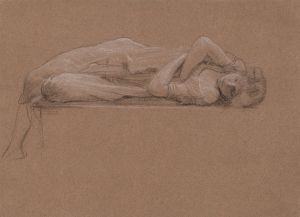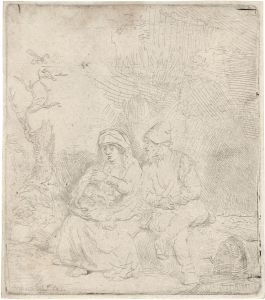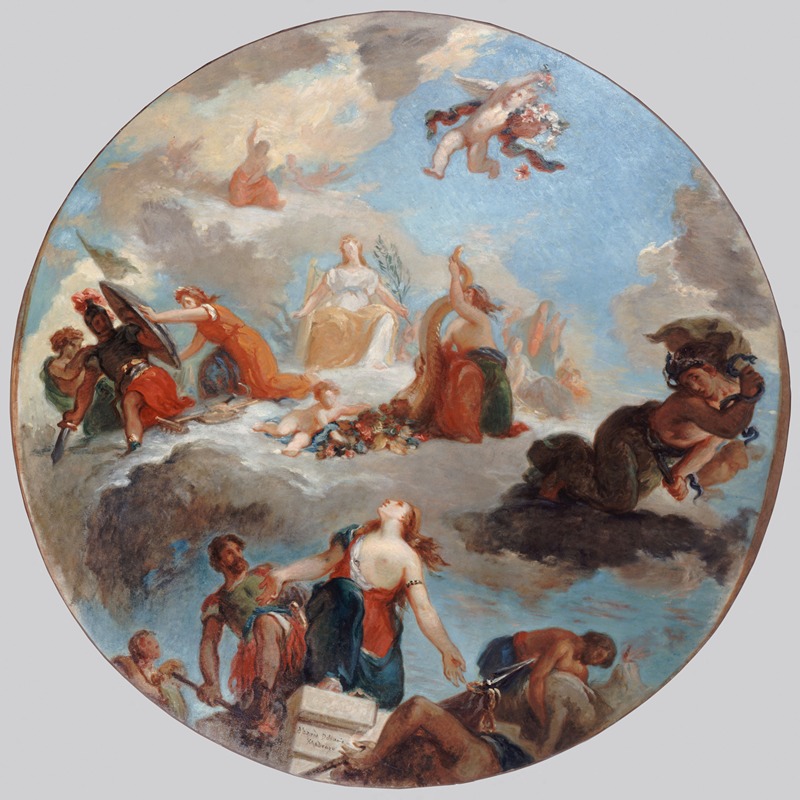
La Paix vient consoler les hommes et leur ramène l’Abondance
A hand-painted replica of Raimundo de Madrazo y Garreta’s masterpiece La Paix vient consoler les hommes et leur ramène l’Abondance, meticulously crafted by professional artists to capture the true essence of the original. Each piece is created with museum-quality canvas and rare mineral pigments, carefully painted by experienced artists with delicate brushstrokes and rich, layered colors to perfectly recreate the texture of the original artwork. Unlike machine-printed reproductions, this hand-painted version brings the painting to life, infused with the artist’s emotions and skill in every stroke. Whether for personal collection or home decoration, it instantly elevates the artistic atmosphere of any space.
Raimundo de Madrazo y Garreta, a prominent Spanish painter of the 19th century, is known for his exquisite portraits and genre scenes that capture the elegance and refinement of his era. One of his notable works is "La Paix vient consoler les hommes et leur ramène l’Abondance," which translates to "Peace Comes to Console Men and Brings Them Abundance." This painting reflects Madrazo's skill in combining classical themes with the stylistic elements of his time.
Raimundo de Madrazo was born into a family of artists in Rome in 1841. His father, Federico de Madrazo, was a well-known painter and director of the Prado Museum, and his grandfather, José de Madrazo, was also a distinguished artist. Raimundo was trained in the classical tradition, studying at the Real Academia de Bellas Artes de San Fernando in Madrid and later in Paris, where he was influenced by the vibrant art scene and the works of contemporary French artists.
"La Paix vient consoler les hommes et leur ramène l’Abondance" is a testament to Madrazo's mastery of composition and his ability to convey complex themes through art. The painting likely depicts allegorical figures representing Peace and Abundance, a common motif in art that symbolizes the prosperity and harmony that follow periods of conflict. Madrazo's use of soft, harmonious colors and delicate brushwork enhances the serene and uplifting mood of the painting.
The work reflects the broader cultural and political context of the 19th century, a period marked by significant social changes and a longing for stability after the upheavals of the Napoleonic Wars and other conflicts. Artists of this era often turned to allegory to express ideals of peace and prosperity, resonating with the public's desire for a more harmonious world.
Madrazo's style is characterized by its attention to detail and the graceful depiction of figures, often set against richly textured backgrounds. His works are celebrated for their elegance and the subtle interplay of light and shadow, which lend a sense of depth and realism to his compositions. This painting is no exception, showcasing his ability to blend classical themes with the refined aesthetic of the Belle Époque.
Throughout his career, Madrazo achieved considerable success, exhibiting his works in prestigious salons and receiving numerous accolades. He was part of a vibrant community of artists in Paris, where he spent much of his life, and his works were highly sought after by collectors and patrons across Europe and America.
"La Paix vient consoler les hommes et leur ramène l’Abondance" remains an important example of Madrazo's oeuvre, embodying the artistic and cultural values of his time. While specific details about the painting's provenance and current location may not be widely documented, it continues to be appreciated for its artistic merit and the timeless message it conveys.





